Colorado ag producers innovate amid growing water challenges


By Cahill Shpall
April 18, 2024Cahill Shpall is a master’s candidate in the Colorado School of Public Health, a collaborative effort of CSU, the University of Colorado, and the University of Northern Colorado. He works as a graduate research assistant with CSU’s Department of Agriculture and Resource Economics and serves as a fellow with the Colorado Food System Advisory Council. Photos provided by Cahill Shpall.
If you’ve spent any time in Colorado, you’ve likely heard about our state’s water challenges. Stories come to mind of historic droughts, shrinking snowpack and the impacts of agriculture and population growth.
But the stories we don’t hear as often, or as loudly, are those of people looking at the stubborn problems they face and deciding to act, innovate, and make themselves part of the solution.
90%
Of farmers and ranchers see gaining knowledge and collaboration as key to addressing their water challenges

As part of my summer internship with CSU Extension and the non-profit LOR Foundation, I spent more than two months analyzing over 260 applications from farmers and ranchers across the country making the case for why LOR should fund their experiments to improve their water use.
My goal was simple: to understand the challenges faced by farmers and ranchers and how they were approaching innovation.
A legacy of agricultural innovation
Agriculturalists are among the oldest and most creative innovators. My research found that over 90% of farmers and ranchers see gaining knowledge and collaboration as key to addressing their water challenges.
But there’s more to life than numbers. I wanted to get my boots on the ground and see for myself. I was lucky enough to meet with four Colorado producers who are adapting to a more uncertain future.
I hope the insights from their journeys will offer two things: a guide for people who are unsure whether or not it’s time to make a change and a source of inspiration for those who feel like the challenge of adapting to a changing world is too big to take on.
None of these producers accomplished their goals alone. They relied on their community, their friends, family, and mentors who had gone before them. Now, they are setting an example for what the future of Colorado agriculture could look like.
What I learned changed my understanding of water management in the West and how we can continue to nourish ourselves while preserving our most vital natural resources.
SW Colorado Research Center
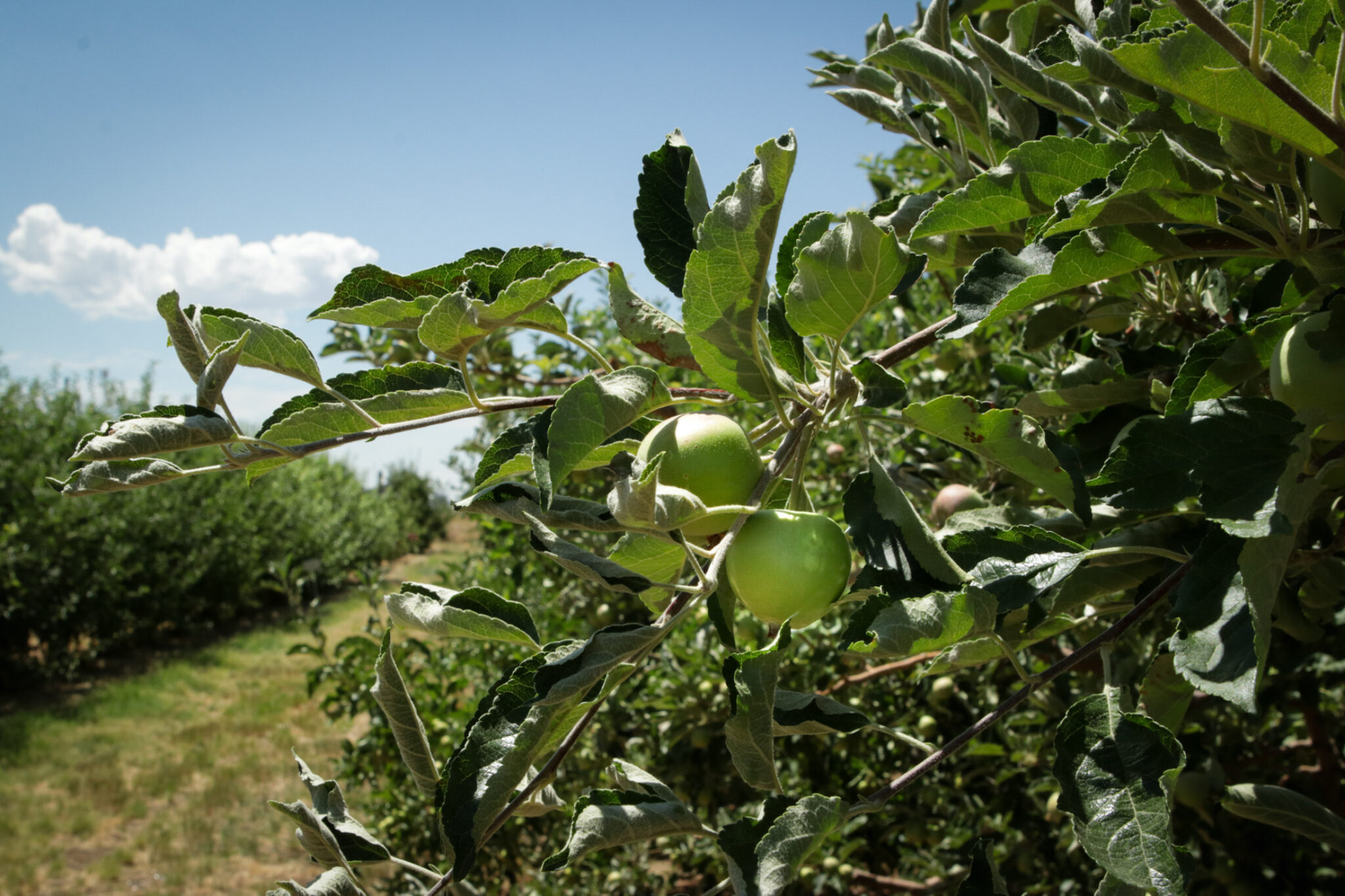
CSU’s Ag Experiment Station and CSU Extension collaborate to show what’s possible to grow – and profit from – in a historically dry part of the state.
Pueblo Seed & Food Company
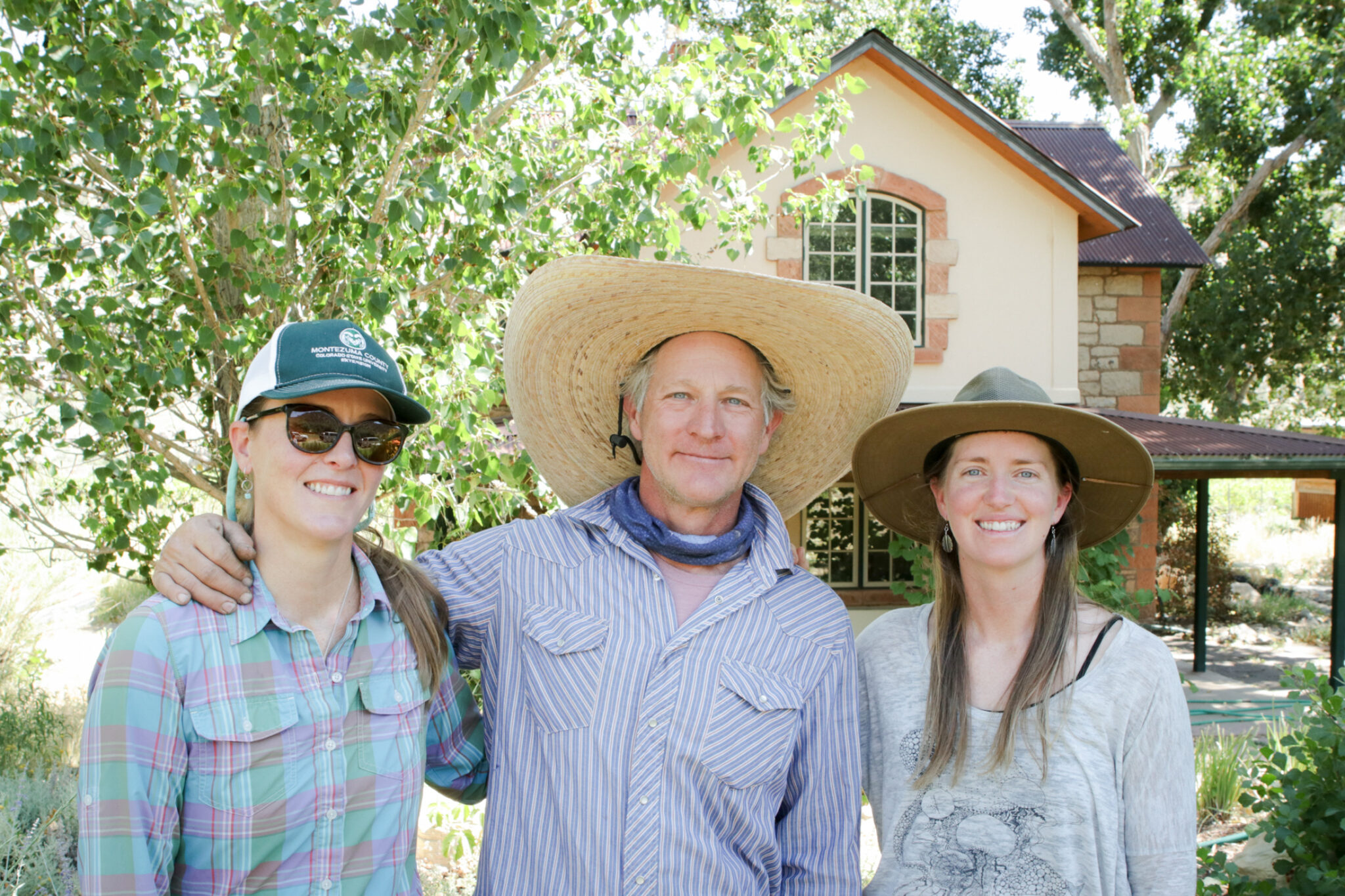
Developing seed varieties with a focus on drought tolerance and expanding the scope of their business beyond crop production.
Wolcott Ranch
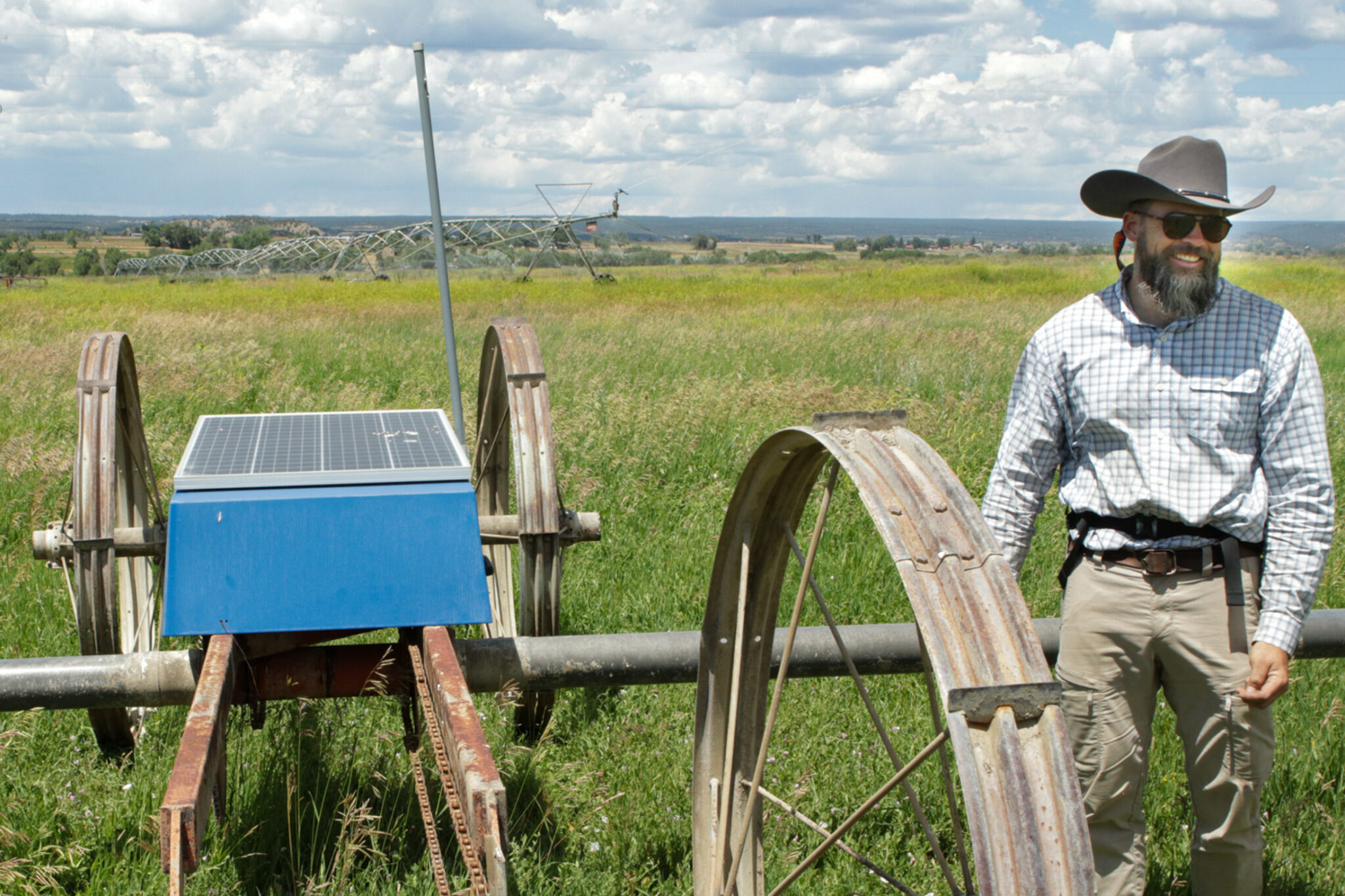
Experimenting with ways to improve pasture health, such changing grazing operations and shifting to solar powered side roll irrigation.
Rocky Mountain Golden Fleece
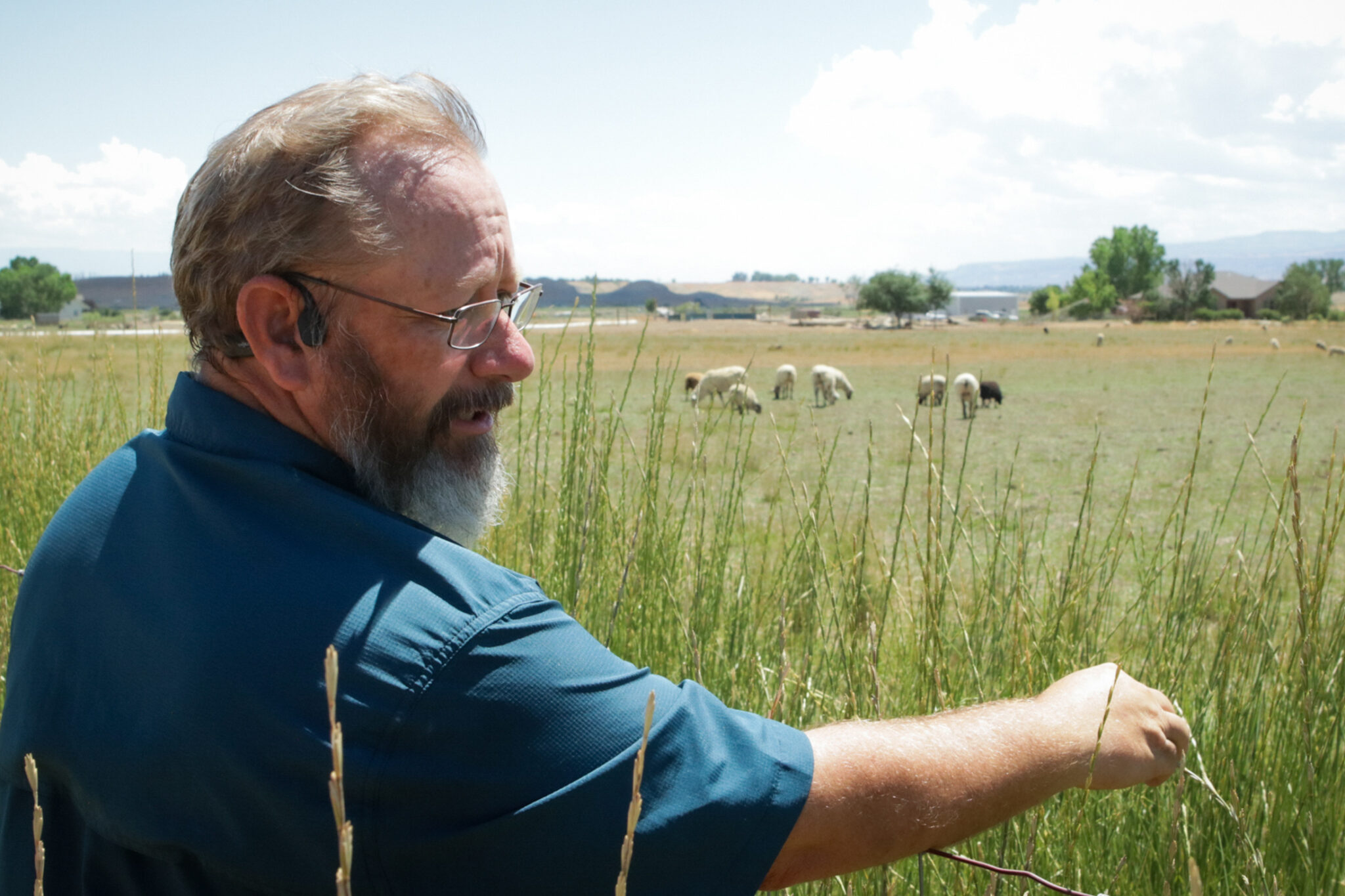
Exploring the market for “waste” wool, which can be pelletized and used as a soil amendment to help retain water and support soil health.
Southwestern Colorado Research Center
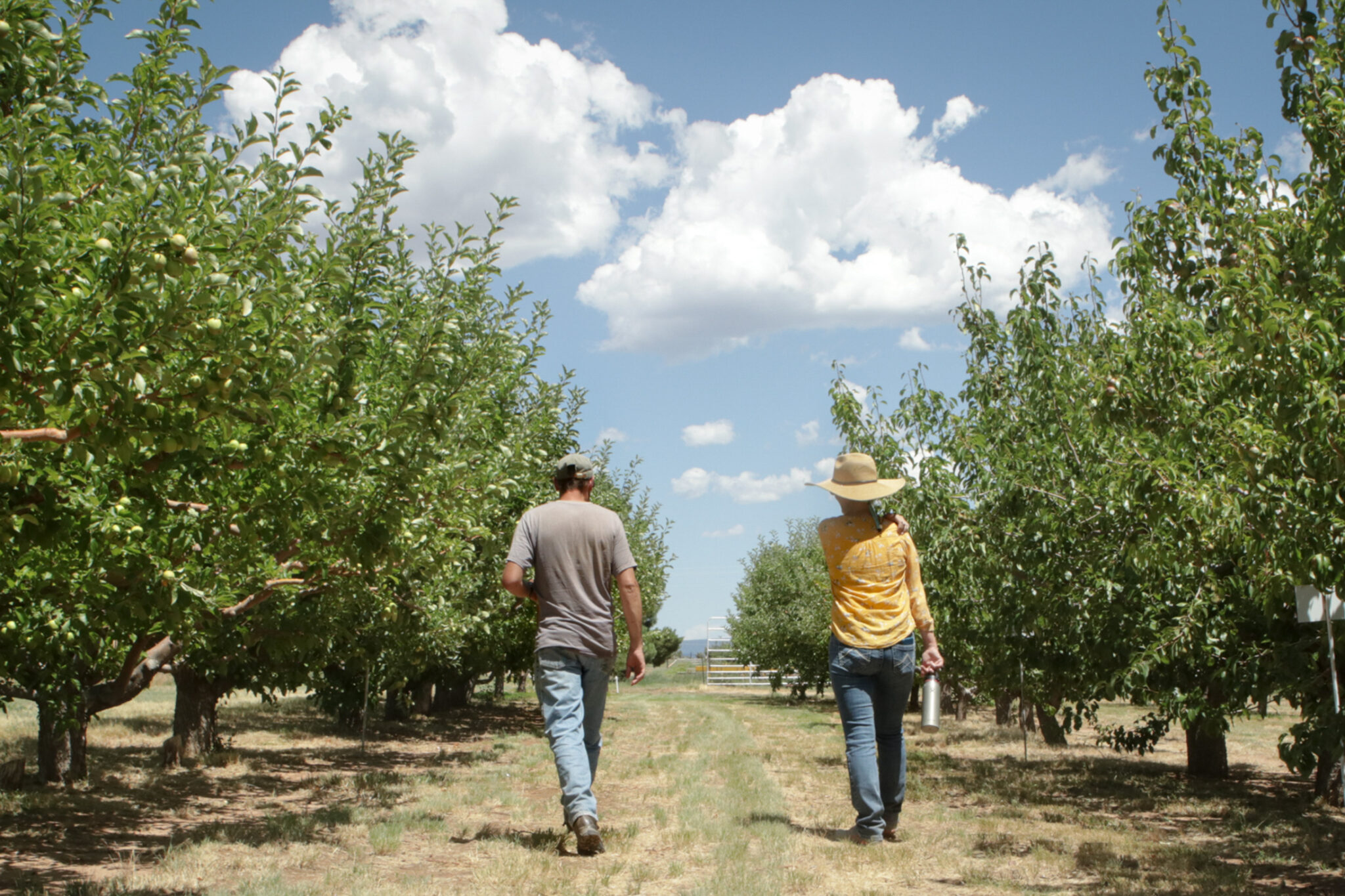
Gus Westermann, Dolores County’s CSU Extension director, runs a research and demonstration orchard, which is a joint effort between CSU’s Agricultural Experimental Station and Office of Engagement and Extension.
Currently, researchers are conducting studies on roughly 75 different fruit tree varieties. These efforts create valuable insights into how to successfully grow and harvest produce that is less water intensive than common crops like alfalfa.
Like many agricultural producers, Gus wears many hats. He performs various roles from farming to administration, human resources, research, and grant writing.
With dozens of trees, including apples, apricots, and pears, there is nothing experimental about the deliciousness of the fruit these trees produce.
Community-empowering research

The COVID pandemic displayed how this research supports community resilience. During this trying time, thousands of pounds of fruit were distributed to the surrounding communities and tribal nations. This led to even longer lines at the annual you-pick event, which usually stretch a quarter mile.
The orchard not only enables ongoing research into regional heritage fruits but also sustains itself through annual fruit sales.
The orchard serves as an invaluable resource for community education and water conservation efforts. Local breweries also benefit economically by using the orchard’s apples in their beverages. None of this would be possible without Gus’s guidance.
This innovative project showcases how research can offer real benefits to the community, especially in challenging and changing environments.
‘Weird things, in realistic conditions’
Emily Lockard, Montezuma County’s Extension director, fired up the side by side and took us out to see her dry-land restoration research plots at the SWRC. These research plots are helping answer increasingly common questions about water management in a changing Colorado.

The plots are surrounded by mountains, with the windswept ears of Sleeping Ute to the South, the San Juans to the East, the Abajos to the North, and Bear Ears just peaking over the rise to the southwest.
Amid this dramatic landscape, Emily explains her goal: to simulate the complexity of real-world conditions.
These plots replicate the “messiness” of real-world conditions. She asks the hard questions within realistic parameters so she can give the most informed, practical and applicable advice to the people who need it most: local farmers and ranchers.
Her passion and the beauty of her test plots was empowering.
In response to decreasing rainfall, Emily focuses her research on how to best convert dry, annually cropped land into perennial, native grasslands suitable for grazing livestock.
She is also experimenting with fallowing fields and different ways to maintain soil health.
But all of her plots ask the same question: “With less water, what’s next?”
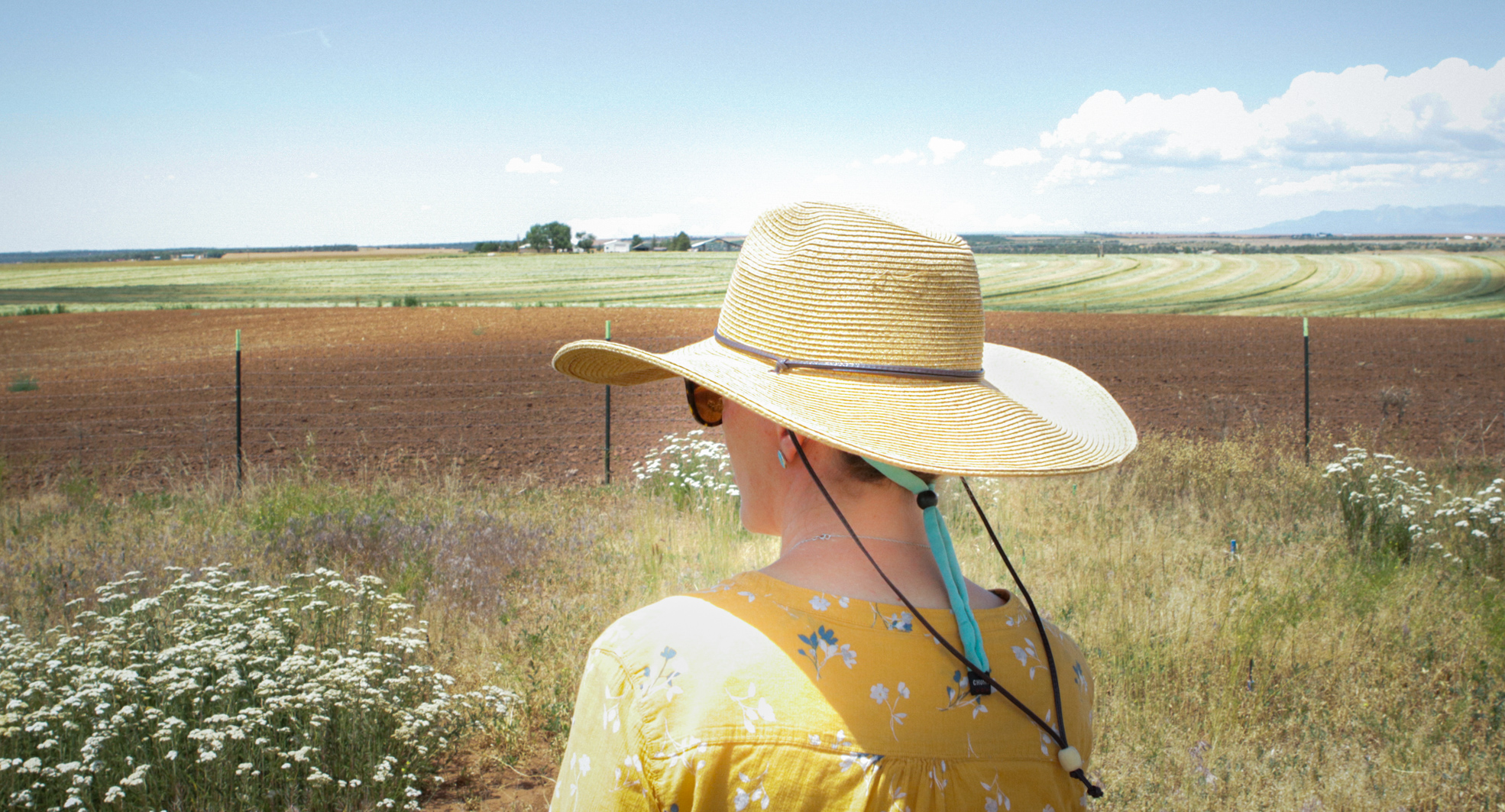
Emily is proud of her test plots that some see as a “weedy mess” In this space she can do the “weird things, in realistic conditions” that better inform her agricultural community. Generally, most of her plots are broken down into two buckets, plants that prefer cooler weather and those that like warmer weather.
She experiments with various techniques for improving water retention and soil health, while exploring new planting strategies and plant selections. One of her plots uses a pitting design based on Hopi Waffle gardens, which feature shallow depressions that help retain moisture.
Another plot uses cedar bark mulch, and yet another uses connectivity modifiers, which are small fine-meshed wire x’s that aim to help mitigate soil erosion and trap passing moisture. An entire section of her research plot is devoted to exploring local questions drawn from Emily’s engagement with the community, asking things like:
“What approaches have worked for you? What strategies you are interested in learning more about?”
Emily then uses these questions as the frameworks for each of her test plots and plants a variety of seed mixes in each to test their applicability to the region.
As she walks through her different plots, Emily rattles off Latin classifications and colloquial names, a proverbial fountain of knowledge. Her commitment to research with the intention of sharing what she knows with her community is inspiring, and it doesn’t stop here.
She is also collaborating with the Mountain Ute Tribe on an expansive rangeland management project. The land is covered in Russian thistle, annual wheat grass, and layers of issues: feral horses, semi-wild cattle, two decades of drought, and a heap of bureaucratic challenges.
Undeterred, she sees it as a great way to build connections with the tribal community. She hopes to play a small part in improving over 200 years of troubled history and the fact that land grant universities like CSU have benefitted from land taken from indigenous tribes.
She explained that the mission is not to tell the communities what to do but to ask hard questions and lean into the discomfort and collaboration that comes from them.
Pueblo Seed & Food Company
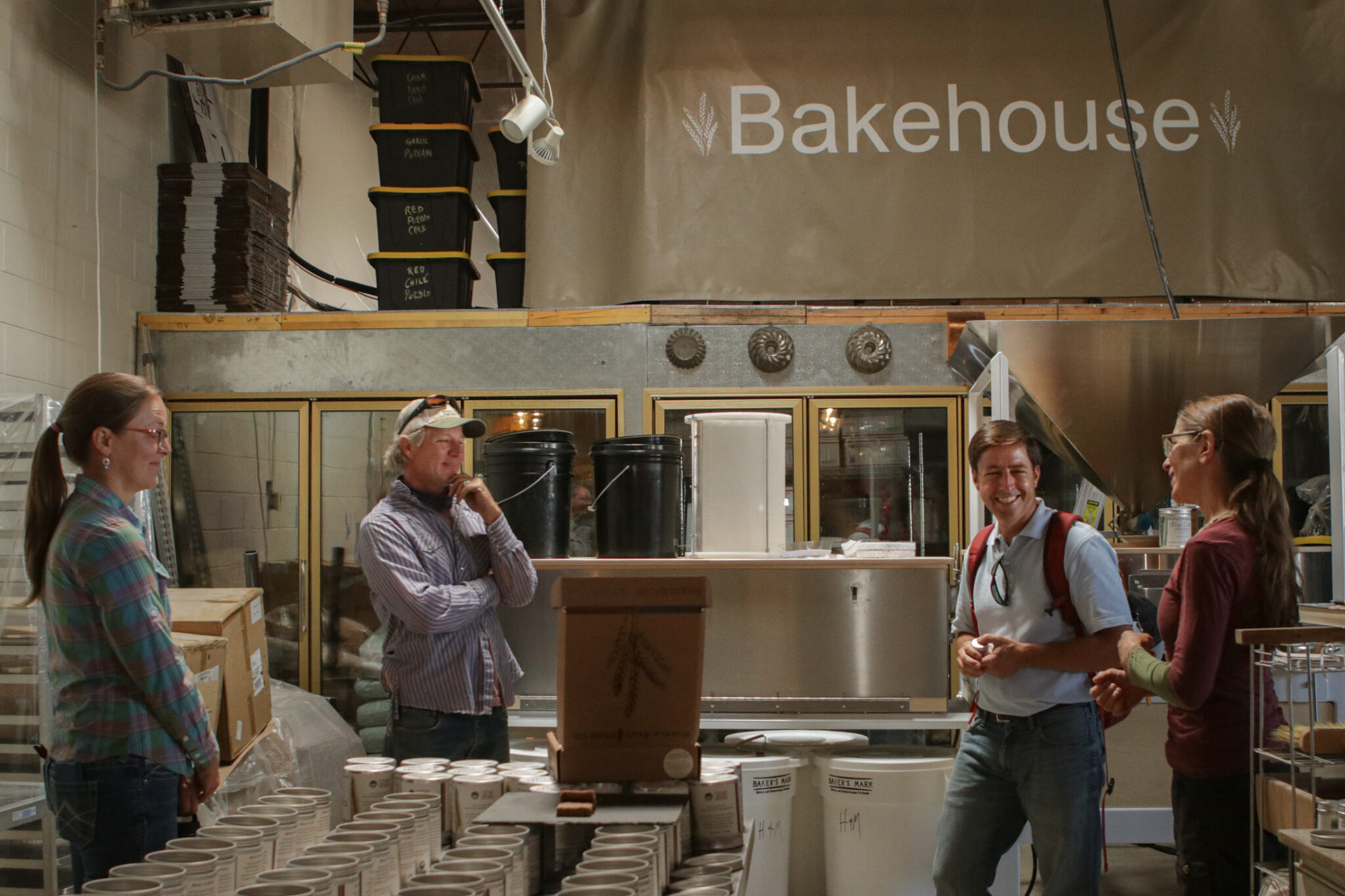
Dan Hobbs and Nanna Meyers are slow motion magicians, casting spells of cultivation across dry landscapes. From their efforts sprout seemingly endless varieties of ancient grains, beans, chilies, carrots, squashes, and more.
The farm business they started together almost three decades ago in northern New Mexico is their child, born of a passion to use food to connect and strengthen communities and better steward the land.
Their farm evolved into the Pueblo Seed & Food Company. This growth was founded on the belief that historical lessons in innovation, combined with breeding water-efficient plants, can prepare us for the future.
In 2021, the couple moved their farm from Pueblo to the isolated McElmo Valley in southwestern Colorado. Here, they deploy advanced techniques to reduce the impact of pollen drift from neighboring farms, allowing them to refine their openly pollinated crops suited for dry climates.
Constantly adapting, they tirelessly search for combinations and strains of grain that are best suited for the ever-evolving challenges in the area, pushing their plants to mature fast, deliver high yields, resist pests, and tolerate drought.
Reshaping their business
The innovations that Dan and Nanna seek don’t stop at the field’s edge. Their company, which has primarily focused on seed sales, now has a storefront in Cortez, serving as bakery, mill, history exhibit, seed cooperative and classroom.
By diversifying their operation and income streams, Dan and Nanna hope the new direction will increase their ability to make an impact on their community.
Dan was kind enough to give me a private tour before the new store officially opened. He started it off with the seed shop, where in the winter months seeds are winnowed, sorted, packaged, and sold.
He shared how he found his passion for farming in South America. Finding mentorship and working the land so tantalizing, he learned Quechua to get his first farming gig and never looked back.
As he led us further back, wheat, barley, and grains of every variety appeared on the walls and walkway, and we found ourselves at The Bakehouse.
Why they do the work

Waiting for us was Nanna. She greeted us with our first taste of their delicious blue corn cookies made with ingredients grown and milled in-house. With a voice like water over smooth rocks, her passion and wisdom for the nutritional benefits of grains flowed over us all.
Nanna Meyers started her career as a professional ski-racer turned sports nutritionist, who decided teaching young athletes to grow their own heritage grains wasn’t sowing enough seeds. So, she pioneered a grain school and has now provided her vast encyclopedic knowledge of nutrition to this powerful partnership.
Both she and Dan spoke about their desires for bringing more ancient grains from around the world to the area, an innovative and less water intensive approach. Additionally, they are seeking to revolutionize the labor pool on their farm.
Not only will their employees receive education and work in the field, but in the bakery and store as well. They are looking at unique models with employees sharing cooperative ownership of certain aspects of the business in hopes of building longevity through a consistent and long-term workforce, which they hope will bring more continuity to their life’s work.
From ancient farmers to today, one challenge remains
Next, Dan took us to one of his trial plots he leases from a local farmer. Dan sources new and interesting crop varieties from all around the world – with USDA approval – and then the farmer tests their suitability to the local climate.

Truly a student of the land, Dan’s voice seemed to fill the valley as he shared powerful stories of the Puebloan people and how the domesticated corn we know today could have been cultivated in the very soil we stood on.
Although it may seem like modern day farmers have little in common with the region’s first agriculturalists, over thousands of years one of their biggest challenges hasn’t changed: water.
Puebloan societies constructed systems of canals and ditches, called acequias, to route water into complex irrigation systems that could bring life to their crops.
Corn was first introduced to the United States from Mexico roughly 4,000 years ago. However, it took indigenous communities living in the southwest roughly 2,000 years of experimentation to identify and cultivate varieties suited for higher elevations and shorter growing seasons.
The cultivation of corn fueled the growth of the indigenous populations, providing up to 70% of the calories the ancient Puebloans consumed. Just a few dozen miles from Dan’s test plots, and roughly 1,000 years ago, vibrant communities around Mesa Verde thrived, with a regional population larger than it is today.
Master dryland farmers, the Hopi, who have lived in the Four Corners region for over 2,000 years, bred more than 19 different types of corn to be uniquely suited to varying climatic conditions.
Dan is inspired by this long history of innovation and experimentation in the region and brings the same commitment and ethos as the Puebloans & Hopi who occupied this land before him: to feed the people.
This plot, and others like it, is where he and his loyal team find out where the next innovations will come from and what experiments they will try next season.
Weaving it together
The Pueblo Seed and Food Company is setting an example for what the future of localized food economies could look like. A food system centered on resource efficient, heritage crops uniquely suited to the ecological conditions of the area, uniquely adapted to use less water.
Dan and Nanna are helping blaze a trail to a future that is more equitable, resilient, nutritious, and most importantly, delicious.
Our society’s pruned attention span and disconnect with the history of the land we inhabit leads us to see the water-related challenges we face in Colorado as if they are brand new.
However, we are following in the footsteps of early farmers, but with added urgency because our climate is changing much more quickly than it was 2,000 years ago.
We can see how this history has helped shape a modern-day society that has immense opportunities for success, and deep trenches of ignorance.
The answers to our most wicked problems will be found by weaving the threads of our communal human past together in the present, planting enough seeds to support our descendants in the future, and making sure there is enough water for them to grow.
Wolcott Ranch
In 2020, more than 50 percent of Colorado’s agricultural sales were from cattle and calves. Additionally, another 1,140,000 acres within Colorado are devoted to hay production, which primarily serves as cattle feed. You cannot talk water and agriculture in the state without talking about cattle.
During my field season I was lucky enough to meet and hear from a worthy representative of these cattle ranchers. The voice belonged to Ben Wolcott.
He is a multi-generational rancher with a strong mind who is adaptable and flexible in his livestock management techniques and the tools he uses to get the job done.
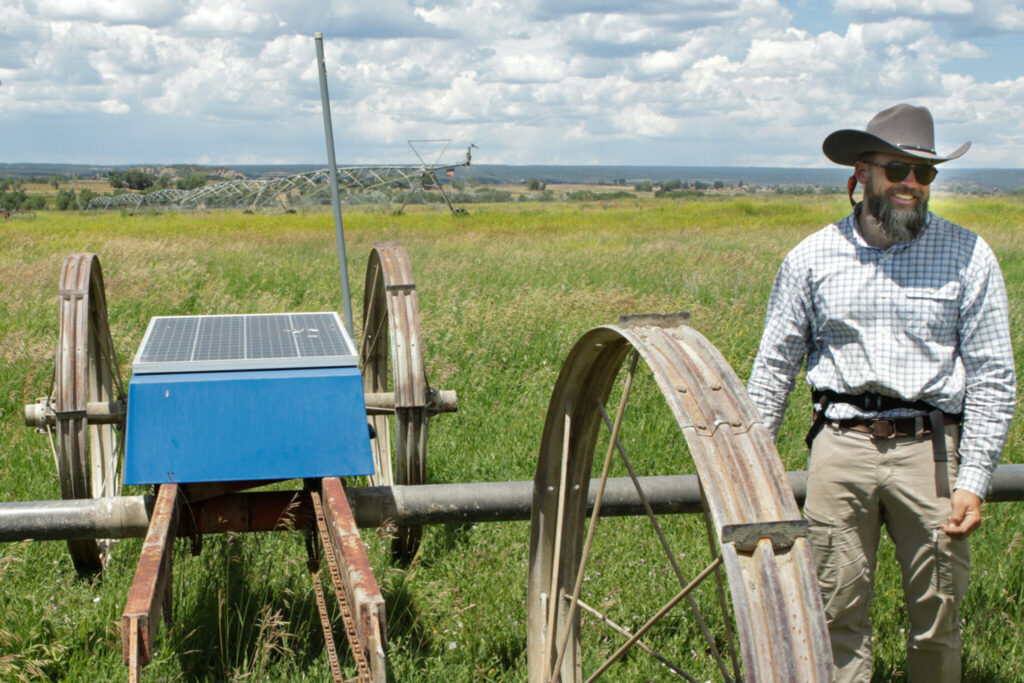
With a full beard, fierce eyes, and a mind faster than a bullwhip, Wolcott strikes an imposing figure. However, his easy laugh and honest desire to learn quickly melts away any misgivings, and before long his true identity as caring father, dependable son, and steward of the land shines bright.
His passion and ethos for his management practices are admirable and one of the most important lessons he has to offer in the face of a changing Colorado. These lessons are imparted through his opinion on prairie dogs.
Ben doesn’t much care for them. But, instead of growing angry and seeking extermination (he already tried that) he began to the study their behaviors and habitat and sought an innovative solution to let the ecosystem control their population for him.
Ben planted native perennial grasses that grow tall enough to hide the prairie dogs’ natural predators. This choice also provided new habitat for the bees in his local beehives.
The methodology of seeking to solve multiple problems with a unique solution tailor fit to the local ecosystem is one of the greatest impressions my time with Ben imparted and one that will guide our adaptations in the face of water shortages.
The challenge of cows who don’t eat grass

In an example of how far our industrial food systems have diverged from natural ones, Ben recently came across a herd of cows that wouldn’t eat grass.
This bizarre conundrum revealed itself just a few days before I arrived with a herd that was dropped off at Ben’s property. He believes they were born on one of the large feedlots and that these cattle had never seen grass before and didn’t know what to do with it.
Struggling to compete with the scale of large, industrial operations, small and mid-sized cattle producers are adapting. One of these adaptations is the type of partnership that delivered these curious creatures to Ben.
This is a cooperative where a group of ranchers pay him to pasture their cattle on his land. Ben takes care of the pasture and the land while the other ranchers handle their own cattle.
Making space for innovative rangeland management
Now that Ben doesn’t need to worry about managing his own cattle, it has freed him up to focus more on developing water efficient strategies to manage his pastures.
With a simple click of his remote the Spartan bearded rancher sent a near acre long piece of equipment roll towards us and then with a swift click rolled it back the way it came.
If you have never had to move side roll irrigation on a commercial scale you will simply never understand the magnitude of labor that this simple button clicking reduces, not to mention the elimination of wasted water when gas powered engines break down or run out of gas in the middle of irrigating.
With the characteristic crack of his bullwhip mind, Wolcott rattles off the long list of reasons why purchasing the new solar powered motor for his side roll irrigation system made economic sense. I nodded along pretending I was keeping up.
His rationale didn’t hold any high-minded ideals. It cut costs to his business, improved efficiency, and helped him not have to walk 14+ miles a day for irrigation maintenance.
These systems aren’t perfect, and they are still expensive enough that they are out of reach for many ranchers, but they are a step in the right direction. Pair them with innovative land share agreements that free up your time to put in rotational grazing strategies and labor reducing technologies and you’ve got yourself a potent mix.
When I looked around Ben’s property, I saw a solar irrigated, regenerative managed pasture, with cows on it who don’t know how to eat grass. In that dynamic I saw the paradox of the future we need to embody and broken parts of our past we need to leave behind.
Most importantly I saw smiles, a willingness to connect, share knowledge and embody this new world right here and now.
Rocky Mountain Golden Fleece

We may grow afraid and feel uncertain about our future in a rapidly changing Colorado, but we can breathe a little easier knowing there are people like Robert in our state who are modeling the age-old military mantra, “Position improvement is continuous.”
As fast as the world changes, we too have the ability to change with it.

Master Gunnery Sergeant Robert Andrews exemplifies this change. He is a retired Marine of 26 years in the service.
During his illustrious career he became a primary contact for the Marine Corps and Department of Defense on counter suicide bomber technology, taking new technologies and directly integrating them into theatre.
After retiring from the Marines and moving to Mack, Colorado, Robert found himself next door to a large sheep operation with 9,000 head.
He grew curious about what it would take to run a sheep operation and asked the owner the best way to start. He was told that it was to learn by doing and was handed three sheep.
“All I knew was sheep went ‘Bah.’ Thank God for Google,” Robert said.
‘The worst mistake I have ever made’
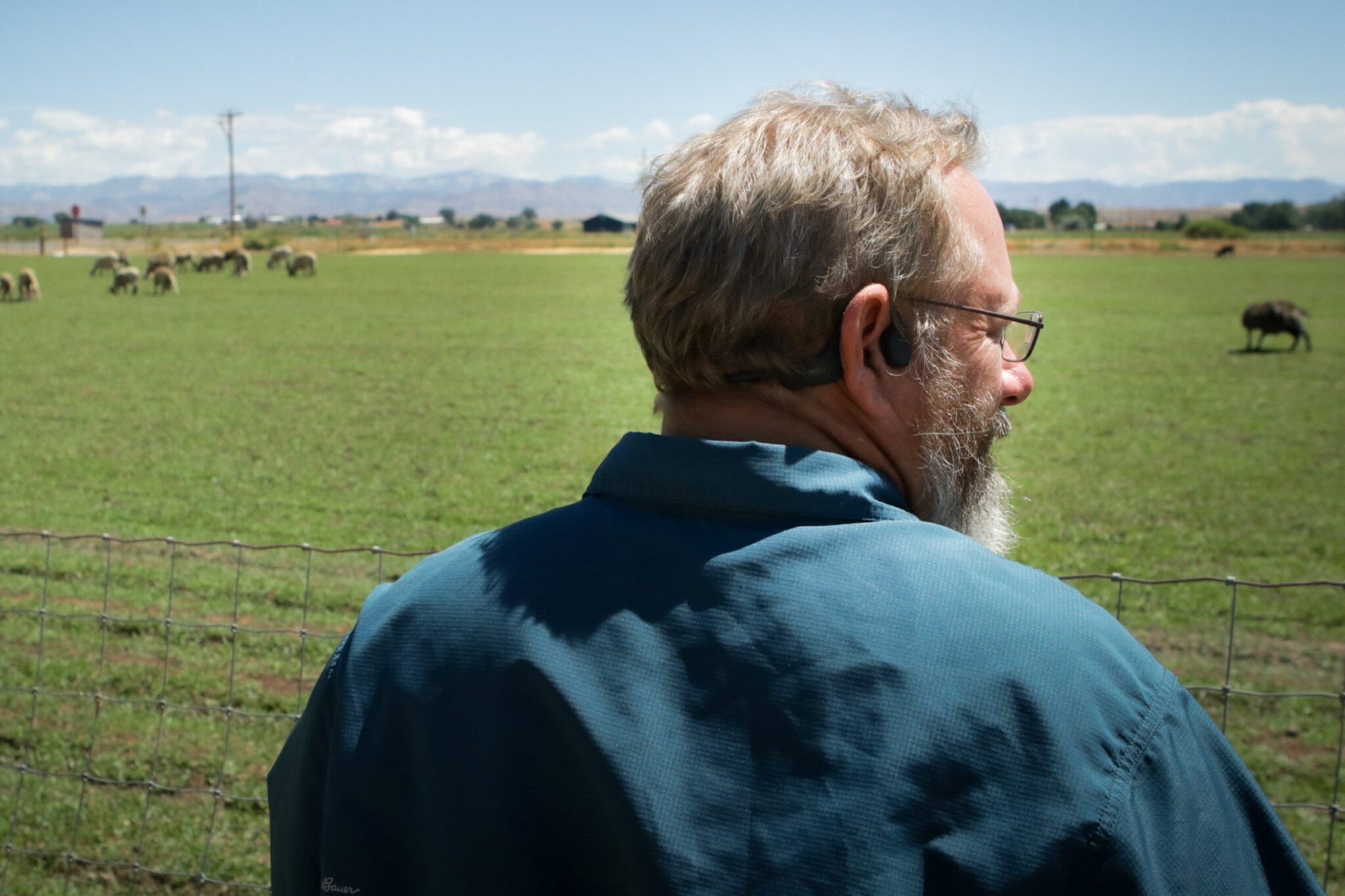
Motivated by his commitment to his family, himself and his newly acquired sheep, Robert tirelessly researched every aspect that would be required to successful run a sheep business.
It wasn’t easy. After his time in the military, Robert was tired of killing and breaking things, and felt the fear of failure with his sheep creeping in.
“I thought at times this was the worst mistake I have ever made,” he said.
“It seemed that everything I touched was dying,” Robert continued. “That put me in a very dark and challenging place to where I felt like I had let down my family, myself, and my animals.”
What finally clicked for Robert was turning on the “process switch” and framing the situation as he would in theatre, or when testing a new technology.
Instead of viewing his situation in black and white term of success and failure, he shifted the questions he was asking himself to: “What is my desired end state, and what do I need to get there? Where do I want to go and what do I need to know?”
“We learned a lot,” said Robert. “We learned what not to do, and had absolutely amazing mentors along the way.”
After this powerful mindset change things really started to fall into place. Some of the biggest pieces were provided by a 3 inch by 3 inch ad for a CSU AgrAbility workshop he saw in the local paper.
Robert said the resources the support he gained from that meeting help place RMGF on solid footing and allowed him room to grow.
A guiding ethos
Along with his wife and adult children, Robert developed two core values that would guide the growth of the Rocky Mountain Golden Fleece: Be part of something bigger and use everything but the bah.
“It’s about the health, welfare, husbandry of our animals. It’s putting your heart, soul, blood, sweat, and tears into them,” added Robert. “It’s the same with the military, it’s about something other than you. It’s about the person next to you, the animal next to you.”
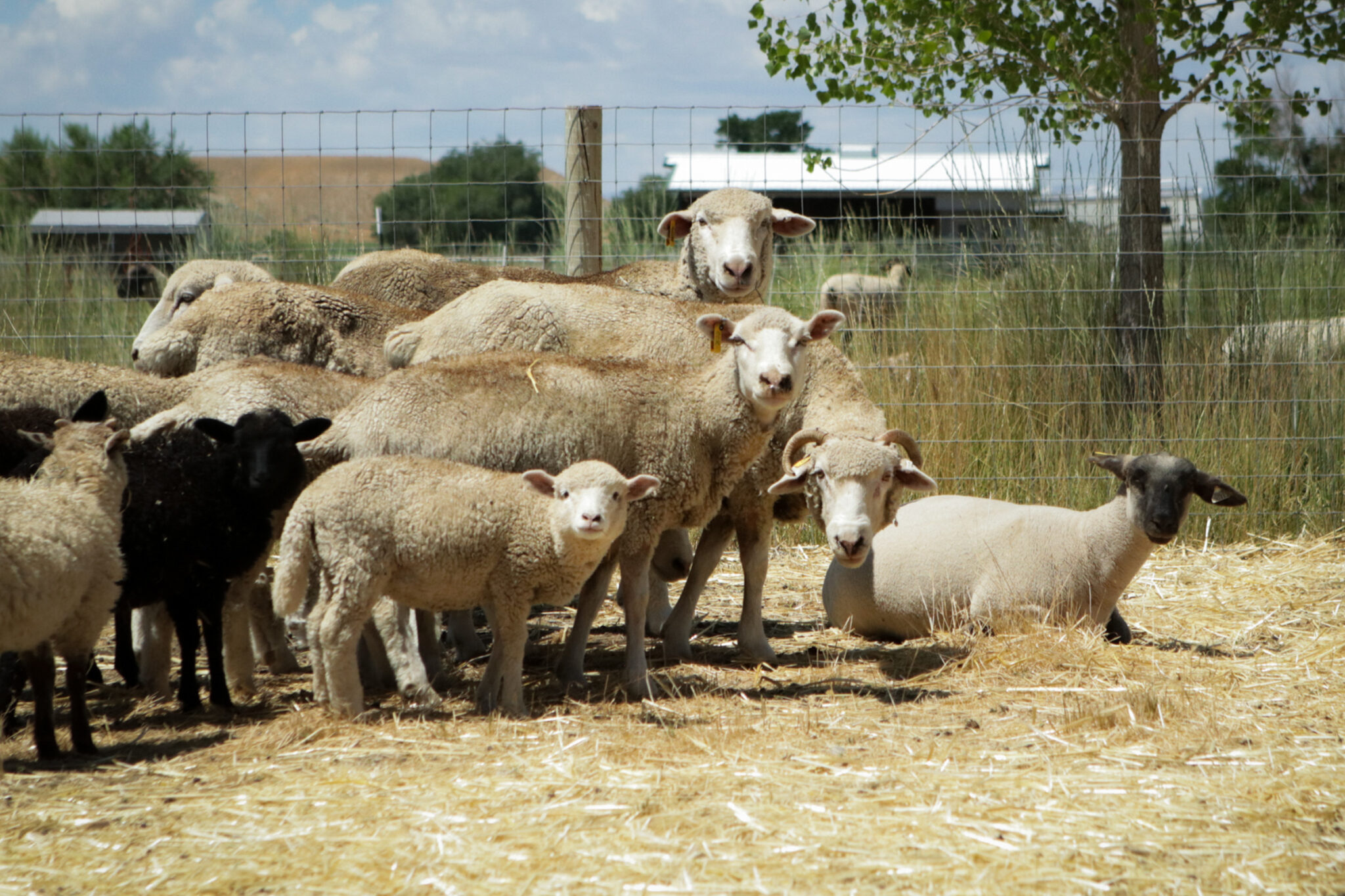
As the sheep operation grew, the ethos of Rocky Mountain Golden Fleece led Robert and his family to ask another question: “What can we do with the waste?”
Across the country there are thousands of tons of mid-grade raw wool that don’t meet the standards for high quality products. This wasted product is currently a challenge for producers who either have to pay to dispose of it in landfills or leave it to accumulate in piles on their properties.
With funding support from LOR, Robert is working to create a market for this “waste” wool converting it into pellets.

Wool pellets are common in Europe and Asia, and growing in popularity in Canada. Nurseries, tree farms, vineyards, and other commercial operations commonly use the wool pellets to help retain water and serve as a planting medium.
By absorbing water and then slowly releasing it into the soil, wool pellets have been shown to increase irrigation efficiency by up to 30% while boosting organic carbon and nitrogen levels in soil.
Additionally, the pellets release nutrients at micro/macro levels that have shown promise as a potential replacement for organic fertilizers. Because of the fibrous nature of the wool pellets, the nitrogen is slowly released over time, a potential benefits for growers.
According to Robert, the pellets start wicking moisture out of the air as soon as they’re in the field. Then, they rapidly soak up irrigated water, while keeping the soil loose but stable enough to grow your crop.
The wool pellets can be put out any time of year with whatever implement you already use to distribute your fertilizer, without the time constraints associated with chemical fertilizer applications, Robert explained.
According to Robert, the pellets also can be applied less frequently than chemical fertilizers because they are less likely to get washed away by flood irrigation. This approach can reduce waste and prevent downstream ecological problem.
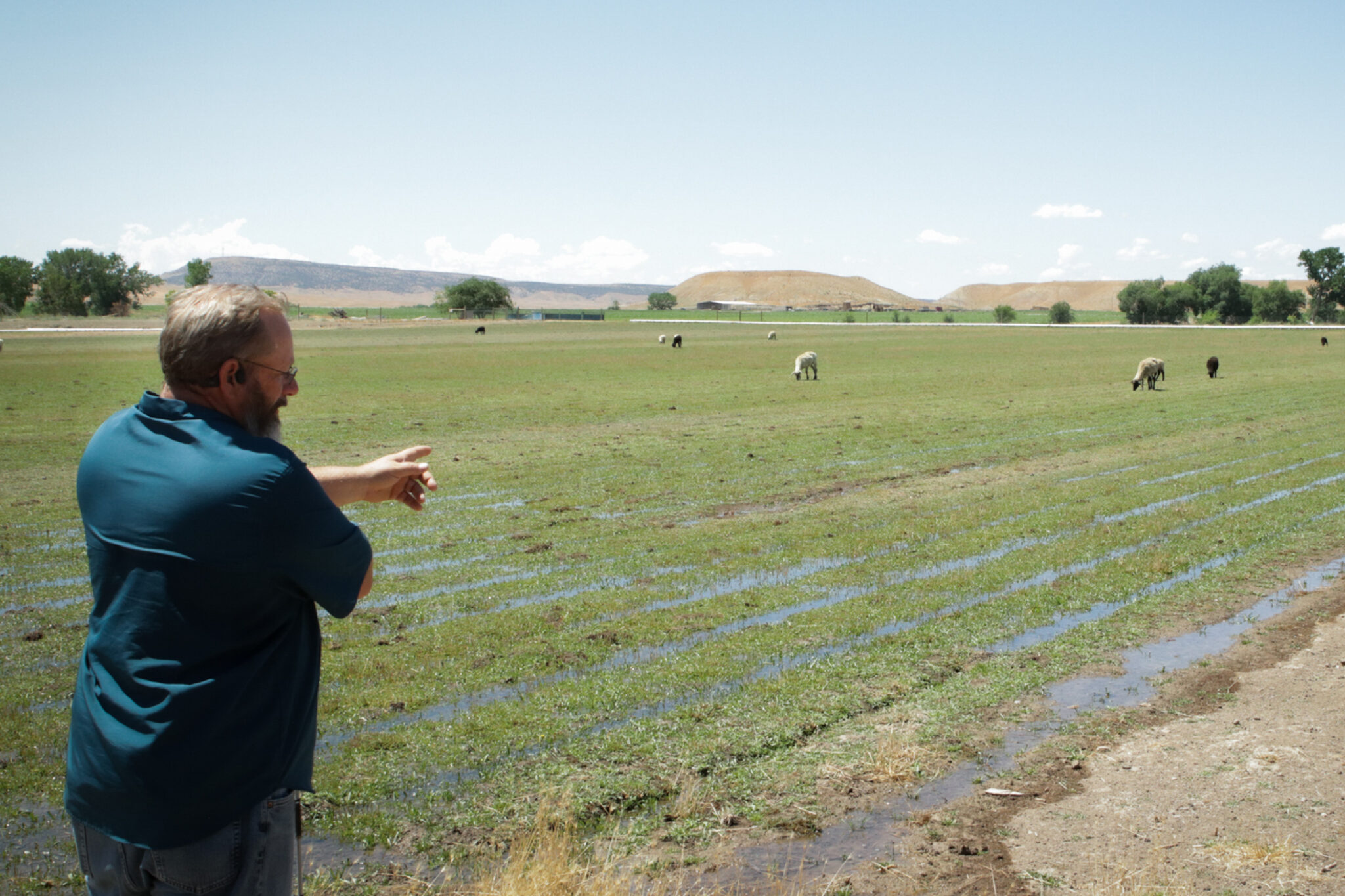
Robert and his family see this project as a major way to increase their capacity to help their community and create incredible resource out of waste. They hope that more growers, from home gardeners to commercial producers, will see the potential in wool pellets.
My time with Robert showed me the importance of having guiding values that hold you true to your purpose.
It also showed me a way to be effective and sane in such dynamic and troubling times, shifting our mindsets away from black and white ideas of success and failure, good and bad, and instead adopting more flexible, process-oriented approaches that seek to uncover where we are now, where we are going, and who we want to be when we get there.
Reflecting on a summer of research and engagement
I believe reinvigorating a dynamic and resilient local food system in Colorado can be one of the most effective public health interventions.
Since I arrived on CSU’s campus, this is the topic I have been focused on. Through my work with CSU Extension, I am hoping to highlight that healthy food leads to healthy people, but that healthy food needs water.
My field season with CSU Extension impacted me in many powerful ways. Most importantly it helped highlight the context these water related challenges are occurring in.
They are happening in a moment where there are large systemic problems in this society, country, and planet. This work is important, and should be done in the spirit of collaboration, honest communication, and reverence for the greater world around us.
However, people get caught in narratives that are missing the successes happening all around us.
Beyond the veils of likes and uploads are good people everywhere doing their best to leave the world better than they found it.
It is not our job to completely fix the broken systems in this country, or the world. It is our job to pursue continuous improvement.
This means putting down the phone, going outside, talking to real people with respect, and finding where your community is already making things better – there are opportunities everywhere!
Do your small part to make a difference and then get up and do it again tomorrow.